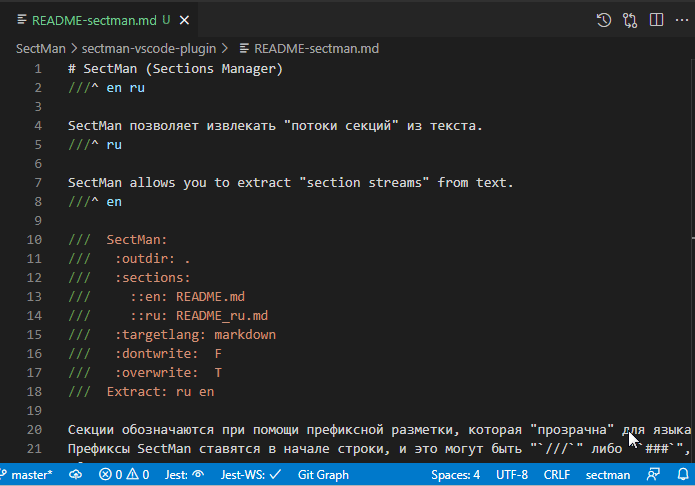SectMan (Sections Manager)SectMan allows you to extract "section streams" from text. Sections are designated using prefix markup, which is "transparent" to the language of the document.
SectMan prefixes are placed at the beginning of the line, and they can be " Section DefinitionThe main working SectMan markup tag is "send to section", it looks something like this: This line is written in the bottom section and means ***"send the data of the section that is higher in the Obviously, this also means "beginning of a new section". This tag is distinguished by a If the prefix The character that is detected immediately after the prefix of visible SectMan tags.
In this case, the " So you can, for example, write a file with text in two languages, and automatically split it into separate files for each language. By the way, to create this text, SectMan is used, which automatically creates two files from one source text.
Setting parametersParameters are specified using "whitespace tags" followed by a description data in HELML format (see description) Data after all whitespace tags to be found in the document are combined into a single Header, which is parsed as HELML format. The whitespace tags for header data can be anywhere in the text. Header and parameter "SectMan:"Before starting any action, SectMan "reads the header" from the text,
and first of all searches for the substring If the "SectMan:" is not found, then the prefix will be determined by scanning the strings
whichever occurs first, " It is recommended that you always specify the " Note: all header parameters are optional, and even if no parameters
are not set, but the prefixes " Important header optionsConsider an example header: |


